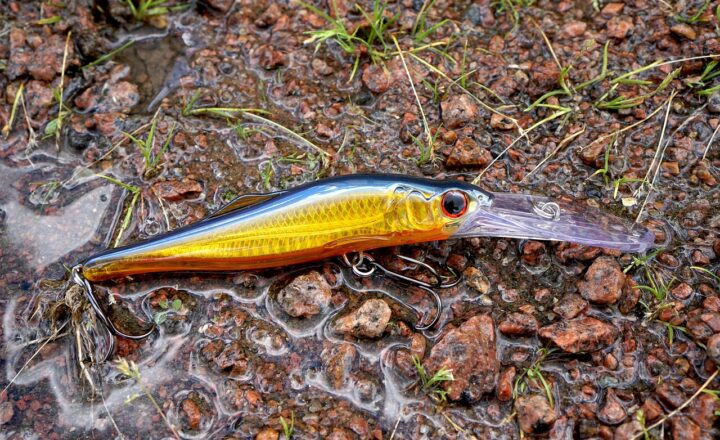The History and Tradition of Spearfishing and How It’s Practiced Today
November 11, 2024

Spearfishing is one of the oldest methods of fishing known to humans. It combines the skill of hunting with the art of fishing, offering a unique experience that connects enthusiasts with the water and nature. The tradition of using a spear to catch fish dates back thousands of years and varies significantly across cultures. Today, spearfishing continues to be a popular sport and is practiced in various forms around the globe.
1. The Origins of Spearfishing
Spearfishing has ancient roots that trace back to prehistoric times. Evidence of spear-fishing tools made from bone and wood can be found in archeological sites dating as far back as 20,000 years ago. Spearfishing allowed early humans to supplement their diets with an abundant source of protein.
- Hand-held Spears: Early forms of spears were made from sharpened sticks, often tipped with stone or bone, used in shallow waters to catch fish.
- Tridents: Over time, multi-pronged spears called tridents emerged, which allowed for easier displacement of fish.
- Harpoons: These were designed for deeper waters and involved fishing boats.
As communities evolved, so did spearfishing techniques, leading to the development of specialized tools tailored to specific aquatic environments and fish species.
2. Cultural Significance of Spearfishing
Spearfishing holds cultural importance in numerous societies. Indigenous peoples around the world have relied on this method for subsistence. Here are chosen examples of cultural ties to spearfishing:
- Polynesian Cultures: In areas like Hawaii, spearfishing is a rite of passage, often integrated into folklore and traditional practices.
- Indigenous Australians: Many Indigenous Australian communities utilized spearfishing techniques as part of their cultural identity, with tools crafted from local materials.
- Nordic Traditions: In Scandinavia, spearfishing played a role in the sustenance of small fishing communities, often celebrated through festivals.
These examples highlight how spearfishing weaves into the fabric of cultural heritage, often commemorated through oral traditions, art, and communal practices.
3. Modern-Day Spearfishing
Today, spearfishing is practiced as both a recreational activity and sport, attracting divers and fishing enthusiasts alike. The modern spearfishing experience varies significantly from its historical roots. Here are some key elements:
- Equipment: Modern spearfishing involves advanced gear such as:
- Wetsuits and Dry Suits: For insulation in cold waters.
- Spearguns: Mechanical devices designed for improved accuracy, allowing divers to shoot at greater distances.
- Fins and Masks: Enhance mobility and vision underwater.
- Techniques: While the essence of spearfishing remains the same, many divers now utilize:
- Freediving: Diving without tanks, relying on holding one’s breath.
- Scuba Diving: Allowing for extended periods underwater to target more elusive species.
- Conservation Efforts: With increased awareness of sustainable fishing practices, spearfishing communities prioritize:
- Selective harvesting to promote healthy fish populations and ecosystems.
- Education about local regulations and protected species.
- Participation in marine conservation programs.
Spearfishing has transformed into a sport that not only demands physical skill and precision but also fosters respect for marine environments and sustainability.
4. Spearfishing Around the World
Different regions sport unique customs tied to their local marine environments. Below are notable styles of spearfishing practiced globally:
- Mediterranean Spearfishing: Commonly occurs around rocky shores and reefs, often using wetsuits and spearguns, focusing on species like grouper and snapper.
- Hawaiian Style: This traditional form incorporates the use of polespears and is known for its exhilarating experiences in crystal-clear waters.
- South Pacific Spearfishing: In regions like Fiji and the Cook Islands, the use of traditional fishing techniques alongside modern gear is common, emphasizing sustainable practices as part of their cultural identity.
These examples illustrate how local customs and fish habitats influence spearfishing practices, celebrating the diversity of the sport.
5. Safety and Regulations
Safety is paramount in any outdoor activity, and spearfishing is no exception. Enthusiasts should adhere to regulations set forth to promote safe and responsible practices. Key points include:
- Boat Safety: Always use appropriate safety gear when on a boat.
- Dive Buddies: Never dive alone; always have a buddy for increased safety.
- Regulations: Familiarize yourself with local laws regarding fish sizes, seasons, and protected species to ensure sustainable practices.
Failure to adhere to regulations can lead to severe penalties and harm fragile ecosystems, reinforcing the need for awareness and responsibility among all spearfishers.
Conclusion
The rich history and tradition behind spearfishing reflect humanity’s enduring connection to the sea. From ancient methods using primitive tools to modern practices employing advanced technology, spearfishing remains a beloved pursuit for many. Its cultural significance endures as communities integrate sustainable practices, ensuring future generations can appreciate this age-old method of fishing. Whether as a source of nourishment or as a thrilling sport, spearfishing will undoubtedly continue to lure adventurers into the watery depths for generations to come.








